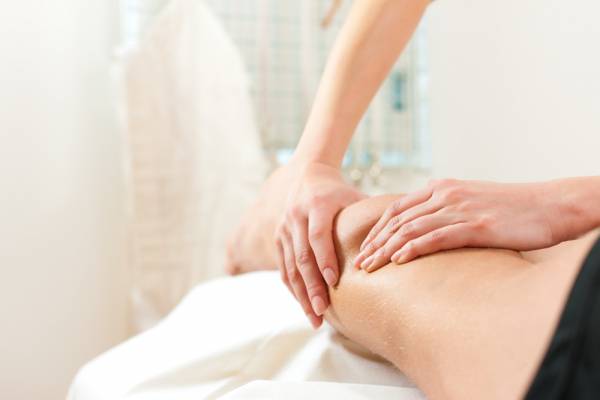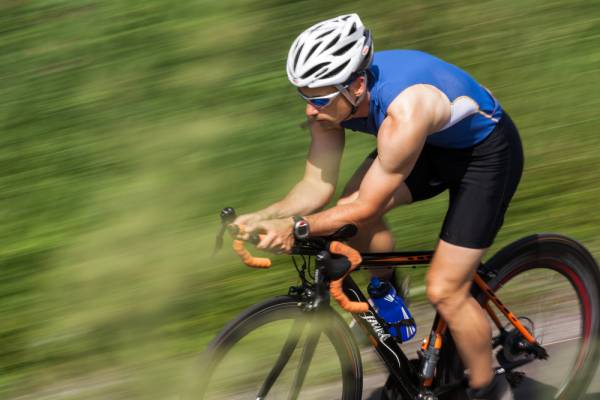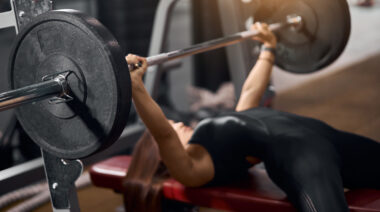Over the last few years, I’ve watched happily as people have started to come to terms with the importance of mobility work. Of course, given the pendulum that is the fitness industry, now everything that doesn’t work is thought of as a mobility problem.
Um, no.
Can’t Squat or Won’t Squat?
Let’s try this as a test. If you know someone who says he can’t squat, tell him to lie on his back and pull his knees to his chest, keeping his tailbone on the ground. It might even be you saying you can’t squat. If so, try this drill yourself.
Being able to get into this position demonstrates that you actually have adequate range to squat. In other words, even though you can’t squat, you do have the requisite mobility. Your inability to squat is not mobility related. Instead, it’s a problem between your ears.
RELATED: Mobility Work: You’re Doing It Wrong (and Too Long)
The Cause of Pain Is Poor Movement
Recently I sat in on a workshop led by Dr. Perry Nickleston at the Strength Matters Summit. I was reminded how the body works as a system, not as a sum of its parts, as many still insist upon telling us. The boiled-down version of the workshop goes like this: stiffness at a joint or pain in a muscle is because of a lack of stability elsewhere.
I’m not prone to one-size-fits-all statements, but barring impact injuries, the cause of pain is poor movement. The thing most people miss when using the joint-by-joint approach is that mobile joints need the stiffness from stable joints to function correctly. Imagine holding a bow in your hands. The front hand needs to be stable so that the back hand is free to move. If the front hand waves all over the place, then the back hand will never move to where it is supposed to go and the whole system is inefficient.
“The thing most people miss when using the joint-by-joint approach is that mobile joints need the stiffness from stable joints to function correctly.”
Following this logic through, what we see is that an ankle that should be mobile could become tighter and immobile if the core isn’t working well. Distal stiffness is caused by proximal weakness. So the runner who has started suffering from plantar fasciitis or Achilles tendon issues is creating stiffness in that area to deal with the lack of stiffness required elsewhere.
Release and Activate
This is exactly why the idea of just doing some mobility work is flawed. It’s no good just to smash this, floss that, or roll this. Nickleston has an acronym for his system that sums it up brilliantly: RAIL. Release, activate, integrate, locomote.
Most avid fitness buffs are good at the release part. Through using a variety of tools including balls, rollers, and massage itself, it seems everyone has grasped that some kind of release work is vital to tissue quality before any form of corrective or load is added.
RELATED: Your IT Band is Not the Enemy (But Maybe Your Foam Roller Is)
But most people fall down in the other sections. It’s no good to get new range from a muscle if you still end up right back where you started – with a problem between the ears. It’s the brain that ultimately controls how much movement you get from a joint. A muscle that is bound up is usually that way because it is working more, not less, than the surrounding muscles.
The muscle that decided to stop working needs to be reprogrammed to do its job properly. Range of motion on its own does nothing to help you. In fact, it may put you at greater risk for injury as now you have more space to control. So don’t just mobilize, re-pattern your movement as well.

Integrate and Locomote
But the road shouldn’t end there, either. Reminding the body of the motor pattern is only part of it. Now you need to integrate this all back into compound movements. This is where you start to see a sequence emerging. Release, activate, and then integrate. You can use primitive pattern work such as crawling and rolling because most of your misfiring muscles will be hit by these.
But that’s still not the end of it all. Because only in standing are we truly in a functional posture, so only in standing can the final work be done. RAIL says that the final step is in locomotion. We spend so much time these days on rolling and mobility work that we forget the final step of the puzzle is always to make sure our movement works in walking and running.
RELATED: Running Is the Killer App of the Human Body
I’m always amazed at how much lip service gets paid to primitive patterns while ignoring the most primitive pattern, and the one that dictated most of our evolution as a species. If your body works right in running, it’ll do everything else properly for you too, as it’s the hardest pattern for the body to get right.
An Example of the RAIL System
Using myself as an example, I came home last week from three weeks away due to work. At the end of this week, I have a half-Ironman distance race (Challenge Shepparton). In an effort to get my bike legs back quickly, I’ve done five hard rides in five days. At the end of the Sunday ride, I noticed my left kneecap was starting to get sore on the top outer edge – a typical symptom of impending IT band troubles.
“The muscle that decided to stop working needs to be reprogrammed to do its job properly. Range of motion on its own does nothing to help you.”
The first thing I needed to do was to remove the problem, so there was no riding on Monday, even though the plan said there should be. Second, I spent a lot of time doing release work on my IT band with a roller, as well as the hamstring, quad, calf, and glute on the same side. After each of these sessions, I would go for a walk and see if things had improved. While attacking the ITB made it a little better, the thing that really helped was doing trigger point work on the glute. When I added stretching the glute in pigeon, the situation improved the most.

But you can’t stop there. I’d done release and now needed to activate. Lying prone I did some thigh extension, external rotation, and abduction work to fire up the glutes. Another quick walk around showed that things had improved a little more. The integration aspect came by doing some single-leg deadlifts, which improved the pain again, to the point of almost being completely gone.
RELATED: What Kind of Deadlift Is the Right Kind of Deadlift?
The final step in the process was to run again and make sure I was pain free. I did another three rounds of release, activate, and integrate during the day (with a walk test after each time) before heading out the door for a trial run. The result? I was completely pain free.
The Take-Home
Remember, it’s no good to just seek mobility unless you have the follow-up steps in place. Mobility without motor control is just another injury waiting to happen.
Photos courtesy of Shutterstock.






